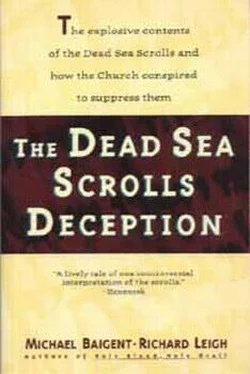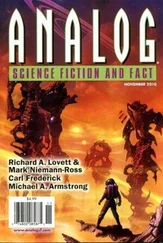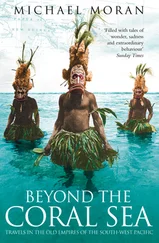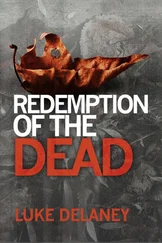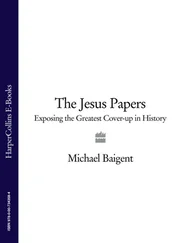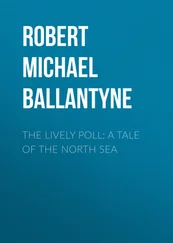Anxious to discourage such behaviour, the Israelis insisted that the new director of the scroll project spend at least some of his time in Jerusalem. Strugnell, who was reconsidering his position at Harvard in any case, complied by taking half-retirement from his post. He began to spend half of each year in Jerusalem, at the Ecole Biblique, where he had his own quarters. But there were other obligations which he failed to discharge. He did not publish the texts entrusted to him. His commentary on one of these texts — a fragment of 121 lines — has been expected for more than five years and has still not appeared. He wrote only one 27-page article on the material in his possession. Apart from this, he published an article on Samaritan inscriptions, a translation of Milik’s study of Qumran and, as we shall see, a long and hostile critique of the one member of the international team to challenge the interpretation of the consensus. It is not a very impressive record for a man who spent a lifetime working in a field which depends on publication. On the other hand, he allowed selected graduate students to work on certain original texts for their doctoral degrees — thus earning prestige for them, for their mentor and for Harvard University.
In general, under Strugnell’s auspices, the international team proceeded pretty much as they did before. It is interesting to compare their progress with that of scholars working on a different corpus of texts, the so-called ‘Gnostic Gospels’ discovered in Egypt, at Nag Hammadi.
The Nag Hammadi Scrolls were found two years before the Dead Sea Scrolls, in 1945. By 1948, they had all been purchased by the Cairo Coptic Museum. There was initially an attempt to establish a Qumran-style monopoly over the material, again by an enclave of French scholars, and as a result, work on them was retarded until 1956. No sooner did it finally get under way than it was interrupted by the Suez crisis. After this delay, however, the scrolls were in 1966 turned over to an international team of scholars for translation and publication. The head of this team was Professor James M. Robinson of the Institute for Antiquity and Christianity at Claremont Graduate School, California. When we spoke to Professor Robinson about the team in charge of the Qumran texts, he was scathing. The Qumran scholars, Professor Robinson said, ‘no longer have to make reputations — all they can do is break them’. 15
Professor Robinson and his team, in contrast, moved with impressive rapidity. Within three years, a number of draft transcriptions and translations were being made available to scholars. By 1973, the entire Nag Hammadi library was in draft English translation and was circulating freely amongst interested researchers. In 1977, the whole body of the Nag Hammadi codices was published, in facsimile and a popular edition — a total of forty-six books plus some unidentified fragments. It thus took Robinson and his team a mere eleven years to bring the Nag Hammadi Scrolls into print. 16
Granted, the Qumran texts were more numerous and posed more complex problems than those from Nag Hammadi. But even allowing for this, the record of de Vaux’s international team does not exactly inspire confidence. When they were formed in 1953, their declared objective and intention was to publish all the scrolls found at Qumran in definitive editions, forming a series to be issued by Oxford University Press as Discoveries in the Judaean Desert of Jordan.
The first volume appeared quickly enough, in 1955, and dealt with the fragments found in the original cave at Qumran, now officially designated Cave 1. Not until 1961, six years later, did the next volume appear; and this did not deal with Qumran texts at all, but with material found in the nearby caves of Murabba’at. In 1963, a third volume appeared, which dealt primarily with scroll fragments from Cave 2, Cave 3 and Caves 5-10. Of these fragments, the most complete and most important was the ‘Copper Scroll’, found in Cave 3. Apart from the ‘Copper Scroll’, the lengthiest text amounted to just over sixty lines, and most came to something between four and twelve lines. But the fragments also yielded two copies of a text known as ‘The Book of Jubilees’. A copy of the same text would later be found at Masada, revealing that the defenders of the fortress used the same calendar as the Qumran community, and establishing closer connections between the two sites than de Vaux felt comfortable acknowledging.
The fourth volume of Discoveries in the Judaean Desert appeared in 1965, under the editorship of James A. Sanders. But Professor Sanders was not a member of de Vaux’s team. The scroll he dealt with — a volume of psalms — had been found by the Bedouin in Cave 11 by 1956 and brought, along with a number of fragments, to the Rockefeller Museum. No purchaser being forthcoming, the material was locked in one of the museum’s safes, to which no one was allowed access. Here it remained until 1961, when the Albright Institute was at last enabled to buy it, finance being provided by Kenneth and Elizabeth Bechtel of the Bechtel Corporation, a giant American construction company with many interests in the Middle East (though none in Israel), many connections with the American government and at least some associations with the CIA. Professor Sanders’s volume thus appeared independently of the framework and timetable established by de Vaux’s international team.
In the meantime, however, the bulk of the most copious and most significant material — the material found in the veritable treasure trove of Cave 4 — continued to be withheld from both the public and the academic community. Now and again, small pieces and tantalising fragments would leak into scholarly journals. But not until 1968 did the first official publication of material from Cave 4, albeit a very small proportion, appear. It did so under the auspices of the one ‘renegade’ or ‘heretic’ on de Vaux’s team, John Allegro.
As delays in releasing the Qumran material persisted, and the time between published volumes continued to lengthen, suspicions began to proliferate that something was seriously amiss. Critics voiced three suspicions in particular. It was suggested that de Vaux’s team were finding their material too difficult, too complex. It was also suggested that they might deliberately be proceeding slowly, suppressing or at least retarding the release of certain material in order to buy time. And it was suggested that the team were simply lazy and idle, basking in comfortable sinecures which they would obviously be in no hurry to relinquish. It was further pointed out that no such delays had occurred with the pieces of Qumran material in American and Israeli hands. In contrast to de Vaux’s team, American and Israeli scholars had wasted no time in bringing their material into print.
The sixth volume of Discoveries in the Judaean Desert did not appear until 1977, nine years after Allegro’s work. A seventh volume was not issued until 1982, an eighth only in 1990 — and this latter did not deal with Qumran texts. As we have noted, draft translations of Nag Hammadi codices were in circulation within three years. In the case of the Qumran material, no such draft translations were ever made available by de Vaux’s team, nor are they so today. The entire Nag Hammadi corpus was in print within eleven years. It is now approaching thirty-eight years since de Vaux’s team began their work, and they have so far produced only eight volumes — less than twenty-five per cent of the material in their hands. 17As we shall see, moreover, of the material which has appeared in print, very little of it is the material that really matters.
In an interview published in the New York Times, Robert Eisenman spoke of how ‘a small circle of scholars has been able to dominate a field of research for several generations (even though some of these scholars have been defunct in this field for years) and to continue to do so through their control of graduate studies and placing their coterie of students and scholars in the most prestigious academic chairs’. 18 Biblical Archaeological Review, an influential journal published by the Washington lawyer Hershel Shanks, described de Vaux’s international team as being ‘governed, so far as can be ascertained, largely by convention, tradition, collegiality and inertia’. 19According to BAR, the ‘insiders’ who hold the scrolls ‘have the goodies — to drip out bit by bit. This gives them status, scholarly power and a wonderful ego trip. Why squander it?’ 20And at a conference on the scrolls at New York University in 1985, Professor Morton Smith, one of the most distinguished names in contemporary biblical studies, began by saying scathingly: ‘I thought to speak on the scandals of the Dead Sea documents, but these proved too numerous, too familiar and too disgusting.’ 21
Читать дальше
